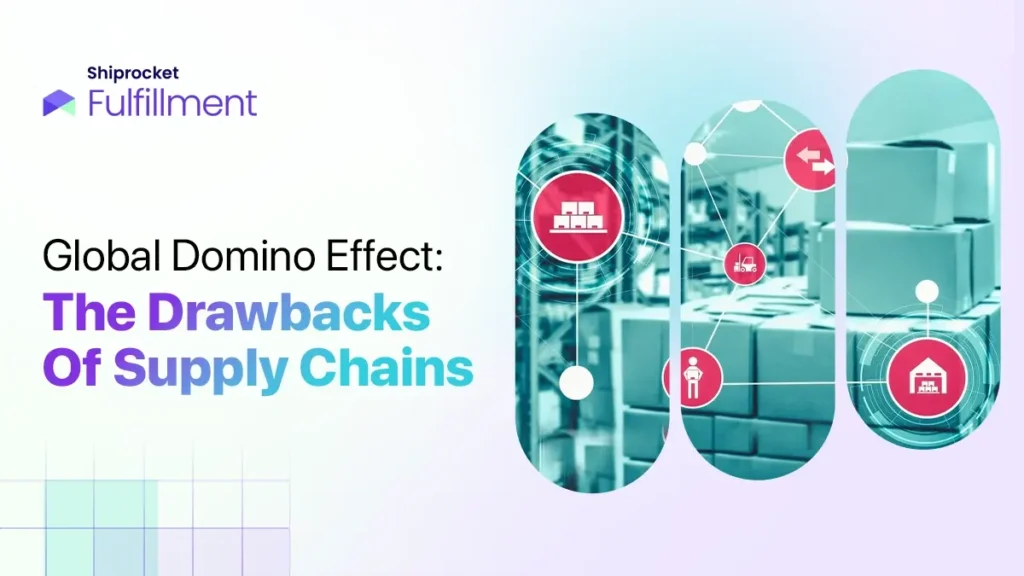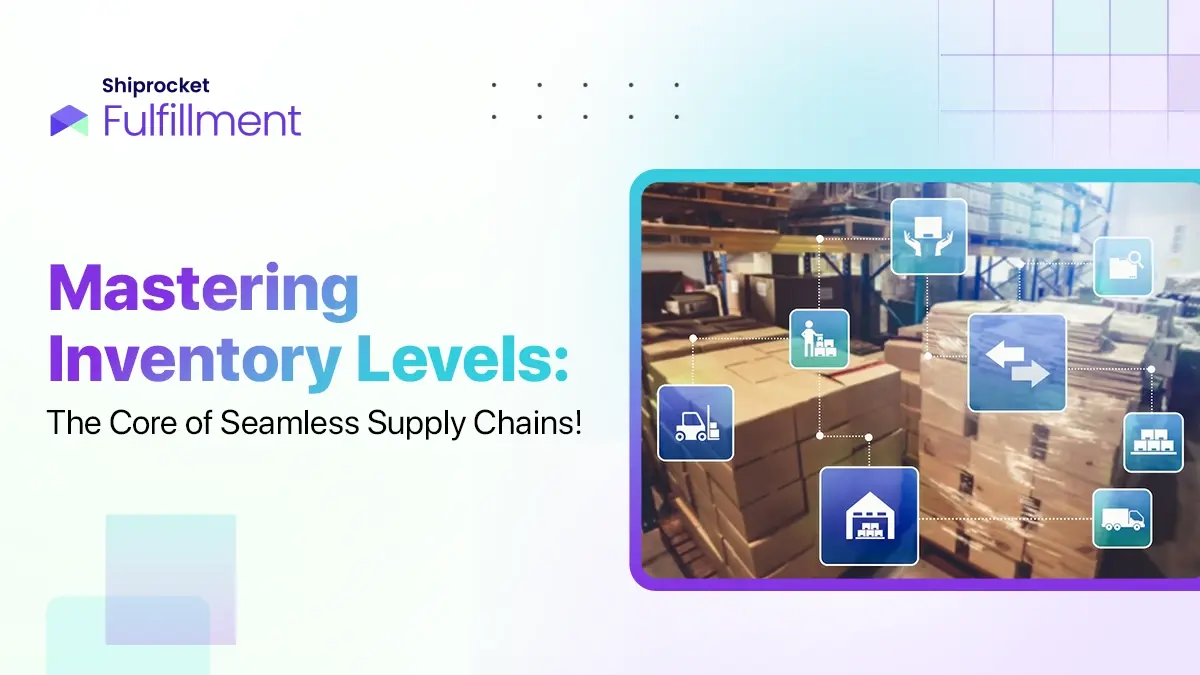Disadvantages of Supply Chain: Learn the Cons to Better Manage Global Logistics
Supply chains are the key to proper and efficient businesses. However, they are prone to vulnerabilities and these disruptions can result in massive financial losses. The lack of supply chain visibility, inconsistencies in the supply of raw materials, and quality issues, are some factors that can be a threat to your supply chain. In fact, only 6% of businesses report full visibility into the supply chain, while a staggering 69% still have poor visibility.

To enhance the efficiency of the supply chain processes and avoid disruptions in its operations, proper management is required. This includes continuous monitoring and improvement to substantially minimise risk.
Every assembly and manufacturing facility is in deep need of a stable and versatile system that helps them complete their daily operations without disruptions in the most efficient manner possible. The lack of good planning and management of the SCM process can cause delays in order completion, leading to customer dissatisfaction and huge losses to the business.
Let’s dive into the disadvantages of supply chain management and strategies for successful management.
Supply Chains: A Brief Definition
Supply chains are simply a network of individuals and companies that are involved in the creation of a specific product and are responsible for its delivery to the customer. With the suppliers providing raw materials to the logistics partners and completing the delivery process to the customer’s doorstep, the supply chain process is deemed to be complete.
Supply chain processes are extremely critical as they streamline all the assembly, manufacturing, and delivery processes to minimise costs and make the production cycle more efficient. The idea of a supply chain is to reduce operation and delivery costs to the lowest value possible and remain competitive in the market.
The various entries included in the supply chain are suppliers and vendors, producers, warehouses and storage facilities, transportation agencies, fulfillment and distribution centers, and retailers. The operation of the supply chain begins with the placement of an order. To continuously improve the supply chain processes the other elements of SCM include product development, operations and marketing, distribution and networking, customer service, and finance. Based on the size of the enterprise these divisions can also be subcategorised to form more detailed plans.
Supply Chain Models
Different supply chain models are deployed on different types of businesses. The classification is based on factors including the type of products you are manufacturing, the size of your business, and the type of operations your business is involved in.
Here is a list of the different supply chain models:
- Continuous Flow Model: The continuous flow model is conventional. It suits those businesses that manufacture similar products with small variations. These businesses have heavy demand for their products and require almost no redesigning. The lack of redesigning enables easy streamlining of all products and also keeps proper control over the inventory. Inventory replenishment is done cyclically to avoid supply bottlenecks.
- Quick Chain Model: This model is a continuously changing model and it is suited for those companies that sell products based on trends. Businesses employing such a model tend to bring their products quickly into the market and sell them for huge profits for that short duration.
- Flexible Model: Seasonal products or festival-based products are manufactured by businesses having the flexible SCM model. There is a sudden surge in demand for certain products during specific seasons followed by long periods of lean demand, and the flexible model makes sure that the business can gear up for production and shut down just as easily.
Know the Global and Local Supply Chains
A worldwide network enabling businesses to buy and use goods that international organisations manufacture is called a global supply chain. The processes within this form of a supply chain aim to aid companies in minimsing their production costs and simultaneously establish large-scale efficiencies. On the other side, a local supply chain is a supply chain in which a business produces and delivers a product or service using suppliers and vendors in the same locality or region. Such supply chains strive to streamline local suppliers.
Businesses prone to supply chain disruptions can benefit by using local raw material suppliers. Supply chain disruptions due to any reason, whether regional conflict or natural disasters, can result in significant losses for a local business. Currently, supply chain disruptions are on the rise globally and in 2021, there were 11,642 such cases.
Thus, having a good network both globally and locally can help you with forecasting, certainty, predictability, and efficiency. It also boosts supplier efficiency in peak demand times.
The Drawbacks of Supply Chains
Poor supply chain management can cost a business in many ways. Here are different ways in which bad implementation of supply chains affects a business:
- Improper management and implementation:
Modifying and deploying a new supply chain strategy takes substantial financial investment, resources, and time. When improperly implemented, wasted labour, redundancy, and inability to fulfill orders occur. All of these result in major losses that can drown a business. Thus, to avoid these unnecessary costs, well-trained logistics partners always conduct thorough research before implementing changes to the supply chain. It ensures that the client’s last-mile logistics, consolidation chances, and freight timelines are well-planned before developing and deploying a new system.
- Insufficient training and inadequate specialisation:
Well-trained personnel are an essential part of any successful supply chain. The lack of properly trained personnel can create complexities in the workflows and usually needs restructuring of the overall process. When complexities are not immediately resolved, they often cause bigger disruptions in the supply chain process, making it impossible to meet consumer timelines. This problem occurs as the supply chain process is complicated and training personnel is not easy.
- Short-sighted view:
Several logistics businesses are often clouded by business myopia. They tend to focus on gaining business and forget to consolidate opportunities to improve their processes and efficiencies. When they begin to skimp on these, they lose out on growing and developing. This stagnates the logistics processes, hindering the overall supply chain processes. Companies will slowly start sinking due to several backorders and improper order fulfillment.
Successful Management of Global Supply Chain: Tips and Tricks
According to a 2021 survey, supply chain disruptions have cost organisations around USD 184 million annually. Managing supply chain processes has become particularly important for every business at individual levels. However, most businesses require proper assessment, assistance, and continuous improvement. Here are a bunch of tips and tricks to successfully manage your supply chain:
Plan ahead
Managing a global supply chain requires proper planning with the right set of decisions. A global supply chain needs the most optimum location to conduct business with ease. Hence, planning and research are crucial for understanding the geopolitical implications of network creation in a region. By researching, you will be able to understand and address probable risks including those about security.
Leverage technology
Investing in the right tools and automated products will help you streamline your supply chain processes. They will improve efficiency and also enable you to gain access to data analytics, real-time tracking, and more. These will help you grow and scale your business while catering to the present demand. Moreover, they also lay the groundwork for the preparation and triggering of other processes.
Leveraging warehouse management software, real-time tracking tools, forecasting tools, financial record software, etc., can minimise the number of errors caused by manual handling and also boost productivity. Such tools can also help you plan, organise, and source different parts of the supply chain.
In 2020, the global supply chain management market was worth around USD 16 billion. Moreover, the supply chain management software and procurement market has expanded more than twice over the last decade.
Build a strong network
By building strong work relationships and networks with other members of the business, improving your global supply chain is not hard. Using a more personalised way of connecting to your suppliers and vendors through video calls instead of emails can help you build a more solid relationship with them. Such alternatives also help you avoid confusion and misunderstandings. Moreover, they can also help you negotiate terms that are favourable to you.
Monitor and track
Tracking and monitoring are the two most important strategies to help you optimise your supply chain processes. By continuously or regularly keeping an eye on them, you will be able to see what is lacking in your processes and how you can mitigate them to improve efficiency and minimise disruptions. This is not something that can be done a few times and stopped, it is a continuous process that must be done regularly to ensure your SCM activities are free from vulnerabilities.
Communicate effectively and regularly
The movement of goods and services is the idea of supply chain and all of this goes off the wagon when there is improper and ineffective communication. Investing in proper communication tools and tracking software, you can eliminate issues like goods being lost. Communication with your investors and stakeholders is also crucial. They must always have a detailed idea of everything that is happening with the business. Effective communication prevents inefficiencies and misunderstandings.
Conclusion
The efficacy of a supply chain is everything for any eCommerce business. The vulnerabilities a supply chain is exposed to can be extremely dangerous and can easily drown a business. Hence, mitigating problems as soon as possible is key to a well-oiled supply chain. The disruptions in it can affect customer satisfaction and brand reputation. The latest technology and the automated tools available in the market today can help you bridge the gaps in your management process.
Poor integrations in supply chain management can have several drawbacks. These include longer delivery times, resource mix-ups, wasted resources, compliance issues, loss of quality control, reputational risks, financial uncertainties, increased complexity, and more.
An integrated supply chain is characterised by several benefits. These are increased flexibility and collaboration, reduced wastage, more visibility into supply chain activities, higher profit margins, better inventory management, and enhanced customer experience. It improves the company’s ability to keep up with the changing market demand.
A global supply chain network can have many benefits. These include lower costs, faster shipping, better management, and increased quality control. Other benefits include better collaboration with suppliers, improved cash flow, increased agility and visibility into the supply chain.
The main causes of supply chain disruptions are lack of skilled labour, interruptions in the transport network, adverse weather, cyberattacks, and data breaches.









